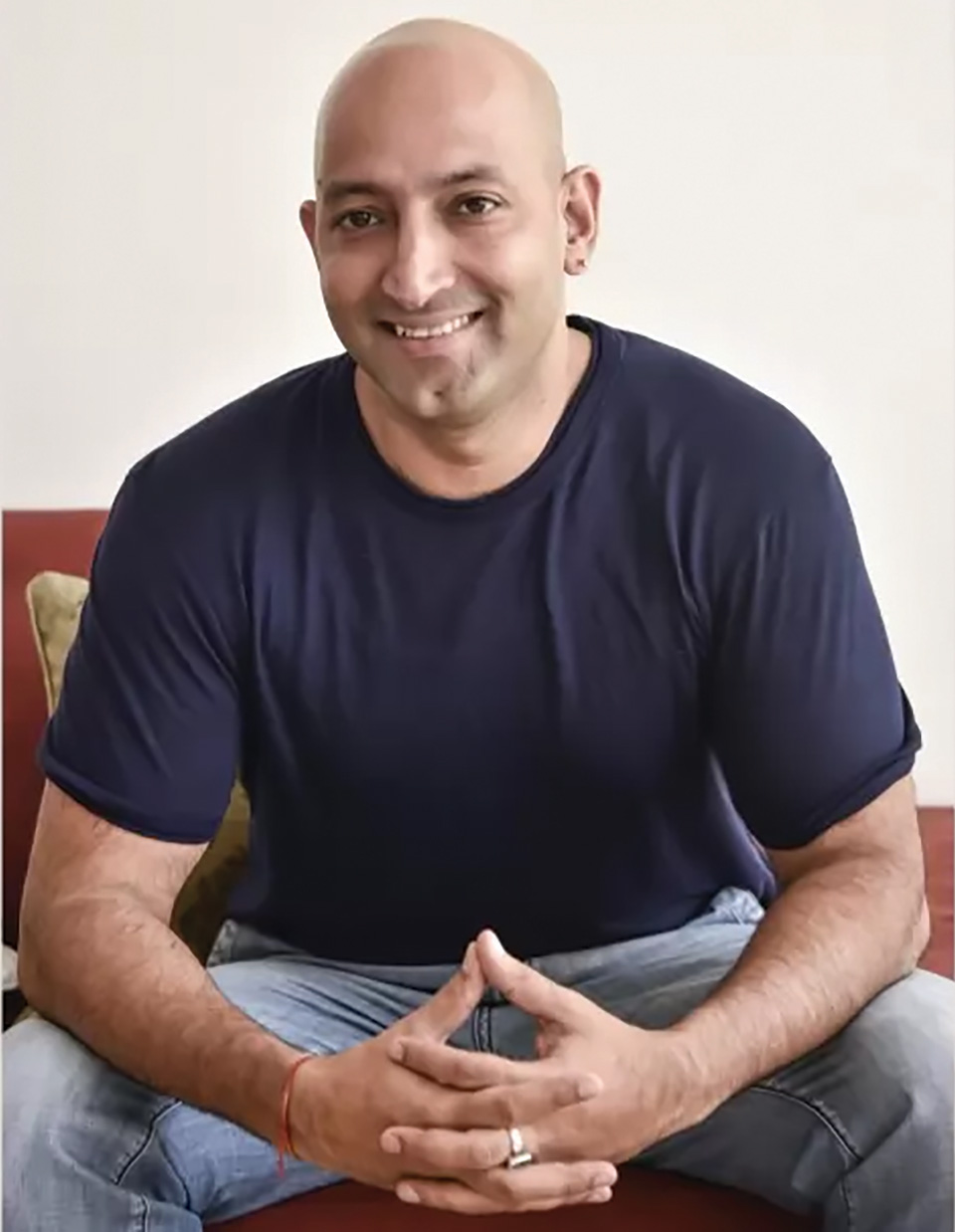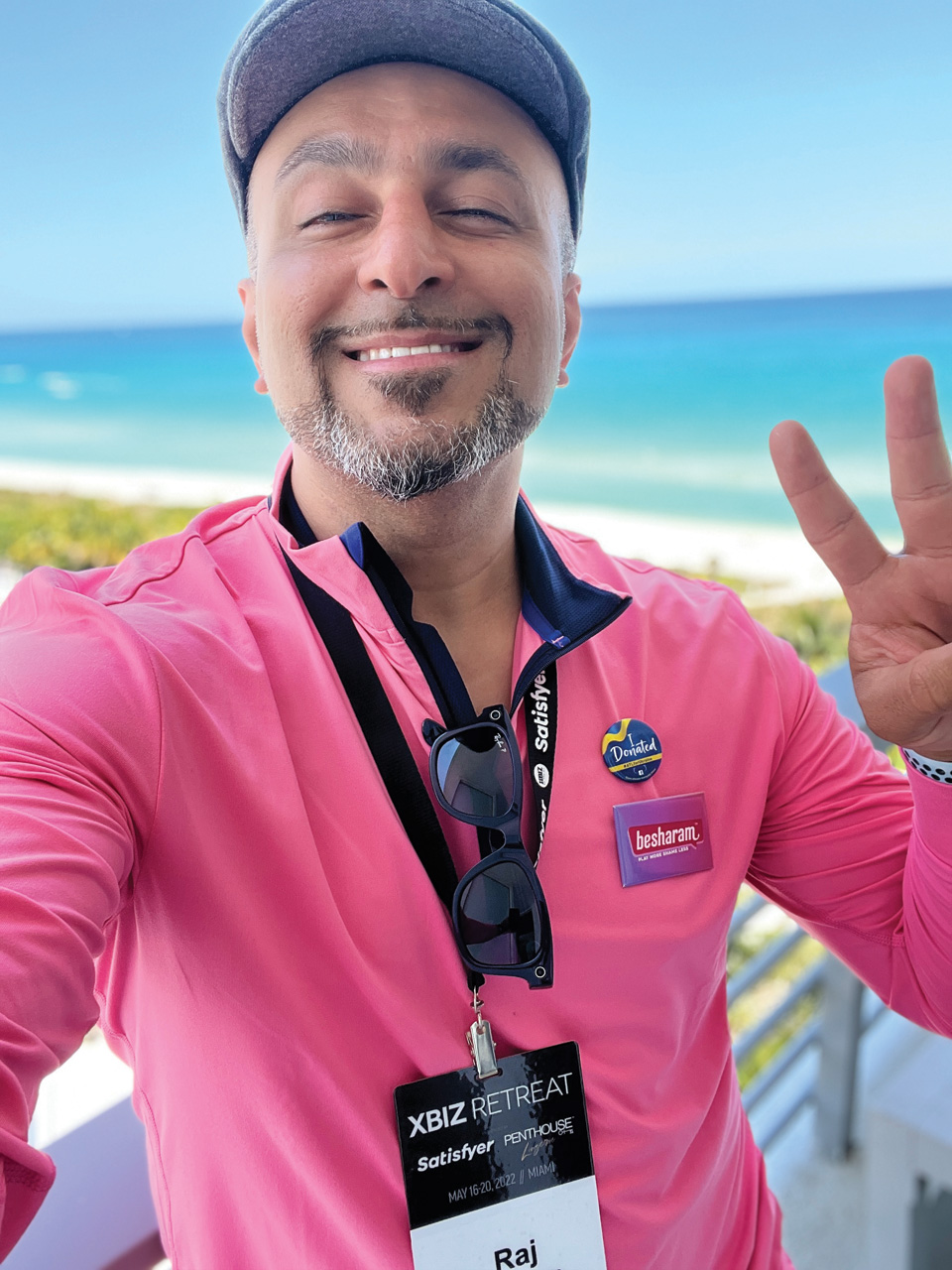Rich in culture and steeped in tradition, India has contributed some of the world’s most important and enduring art and literature — including classic depictions and examinations of sex and sexuality, most notably the Kama Sutra.
Yet despite that claim to fame, modern India is still working to shake off centuries of taboo and stigma surrounding sex and sexual wellness. Women’s sexuality has traditionally been viewed primarily as a reproductive function, and discussions about sex are still often considered taboo.
Things are changing, however. A significant shift is underway in the realm of sexual wellness, driven by a multitude of societal, commercial and technological factors, as well as proactive initiatives aimed at breaking down barriers and challenging taboos.
“While we still have a very long way to go, it’s an extremely encouraging sign that more people now wish to ‘own’ their own bodies without attaching traditional values to their experience of sexuality,” says Shweta Sangtani, co-founder and CEO of Sangya Project, the manufacturer behind the first vibrator made entirely in India.

The evolution Sangtani describes is slowly transforming attitudes in India. In this special report, we examine how that change and other factors are driving the growth of the country’s still-nascent but rapidly expanding pleasure industry.
Driving Demand: Demographics and Influencers
One prominent figure in that expansion is Neil Mehta, founder and CEO of sexual wellness brand Royal Intimacy. Mehta earned a master’s degree in public health to help him combat taboos surrounding sex and sexuality, and established Royal Intimacy in 2017 with the goal of offering high-quality and inclusive sexual wellness products.
“Factors like urbanization, exposure to global influences through the internet, and a rising middle class with disposable income have fueled the emergence of the pleasure industry in India,” Mehta says. “This shift reflects the desires of millennials and Gen Zers seeking more fulfilling intimate experiences, which drives the demand for sexual wellness products and services.”
Farah Shaikh, co-founder of U.K.-based bondage leather goods manufacturer Rouge Garments, believes that it is primarily the older generation and those in rural areas that haven’t caught up with today’s more open attitudes toward sex.
“This is slowly changing with time as the next generation is making their way through life, with the option to travel to different countries and experience many different cultures, especially the West where sex is not seen as taboo,” she says, “Access to the internet, where videos, films and a vast load of information is available, has had a big influence on the younger generation — which will have an impact on the generation after that, and so on.”
Deep Bajaj, founder of Indian feminine hygiene and sexual wellness brand Sirona, cites some additional factors driving social change and product demand.
“Changing social attitudes, an increasing consciousness of sexual well-being and health — and influencers,” notes Bajaj. “Influencers have substantially contributed to conversations in this category by creating educational content.”

Arjun Siva of health care and consumer goods company TTK Healthcare, which has been in business for more than 90 years, concurs.
“A lot of credit should go to content creators and influencers in this space, who have done a stellar job of talking about sexual pleasure and wellness on their Instagram and YouTube channels,” he says. “These ladies — it’s mostly women leading the charge in India! — have really helped reduce the taboo, especially among the younger generation of consumers.”
Raj Armani, co-founder and COO of online retailer Besharam, which has fulfilled more than a million orders since launching in 2013, goes so far as to cite social media as the No. 1 factor propelling the growth of the pleasure industry in India.
“It is where people are talking,” says Armani. “And not just creators, even people who are not in that niche are talking about sexual health.”
Siva also sees pleasure companies themselves playing a crucial role in educating the public about sexuality, through marketing.
“Brands like TTK’s Love Depot and MsChief have done consistent mainstream advertising in the digital space,” Siva explains. “Along with our other brands, they have ensured that all their communications are fun and engaging, thereby bringing younger audiences into the fold and normalizing the conversation around pleasure products.”
“An Unspoken Veil of Modesty”
As a result of these demographic and social media trends, India’s pleasure biz has gathered impressive momentum — but the sector has yet to achieve escape velocity when it comes to breaking free from lingering taboo and stigma around sexual topics.
“Despite growing demand, deeply ingrained traditional attitudes hinder acceptance of sexual wellness as a legitimate aspect of health and well-being,” says Mehta. “Growing up, many Indians had to hide, suppress or deny their sexuality rather than learn and understand what it was.”

This viewpoint is shared by Mehta’s industry colleagues, who agree that in many ways, India remains a fairly conservative nation.
“There is a sizable population that I would say is traditional in their mindset,” says Armani.
Bajaj adds, “Cultural taboos related to sexuality and sex make it difficult to get knowledge and items for sexual wellness, which results in low availability and awareness, especially in rural areas,” Bajaj says. “There are no proper channels of communication when it comes to this category and thus education is slow and limited. As a result, consumer adoption of new products also takes longer.”
These issues are not unique to India, Mehta points out, but remain prevalent throughout the world.
“Limited access to comprehensive sex education exacerbates misconceptions and inhibits open discussions on these topics,” he notes. “There’s an unspoken veil of modesty that covers the topic, making it challenging to seek information or access to sexual wellness products without feeling shame or judgment.”
The level of shame or judgment can vary depending on the product, Siva reports.
“Ayurvedic supplements to boost performance have been doing well in the country for quite a while now,” Siva says. “They also have seen far fewer restrictions with respect to listing and advertising on marketplaces and on media in general. Pleasure products like toys and lubes are an altogether different ball game! There are a lot of taboos and worries in the minds of potential customers: the moral correctness of using toys, misconceptions about legality, feelings of inadequacy if one’s partner were to use a toy, fear of being replaced by toys. These taboos also influence how media and social media platforms interpret the category.”
Legal Hurdles
Another key challenge for the Indian pleasure sector is navigating outdated laws and confusing regulations. In addition, high import costs intended to make domestic goods more attractive and therefore boost the Indian economy can contribute to prohibitively high costs for retailers and consumers.
“Apart from the fees that you’re to pay the broker, the actual duty levied on products is 125%,” Armani points out. “It’s one of the highest anywhere in the world. The Indian government basically says, ‘If you don’t like it, make it in India.’”
Unfortunately, Indian companies manufacturing sex toys and other pleasure products locally quickly discover that they inhabit a murky legal area.
“The sexual wellness business faces considerable challenges due to present rules and regulations in India, including those pertaining to obscenity and advertising prohibitions, which limit attempts at marketing and restrict product availability,” Bajaj says.
Indian law still prohibits the distribution, sale and even possession of “obscene” materials. However, Siva asserts that this cannot and should not be applied to pleasure products.
“Contrary to popular belief, there is no law that states that sex toys/vibrators are illegal in India,” Siva says. “An archaic section of the old Indian Penal Code, written in 1860, that refers to obscene literature, is generally but incorrectly cited as proof of sex toys being illegal. This misconception and incorrect interpretation impacts everyone, companies and individuals alike, that want to buy, sell, import, export or manufacture their products in India.”
The Indian Penal Code (IPC) was replaced in December 2023 by the Bharatiya Nyaya Sanhita, but the BNS retains much of the IPC’s structure and language — including the section cited by Siva, which Armani calls a holdover from the British colonial period.
“They left India in 1947, but their mindset of lifestyle stayed, and so did their rules and the laws that were prevalent at that time,” Armani comments. “The law never got redefined. It’s about obscenity, and it says that if there is anything obscene about the product and its marketing, the distribution of that product is prohibited.”
Recently, however, the High Court of Bombay handed down a decision that may be good news for the burgeoning pleasure business in India. The court overruled an overzealous customs agent who seized a wand massager on the grounds that it could be used as a sex toy, stating, “It was clearly a figment of the Commissioner's imagination and/or his personal perception that the goods are prohibited items.”
Still, Siva cautions against reading too much into the decision.

“It is important to note that this judgment was very specifically about that wand massager, and did not cover other products,” he says. “So while the judgment is certainly welcome, and will help prevent obvious official overreach, it may be premature for us as an industry to celebrate this as a policy shift.”
Besides legality, pleasure product businesses also struggle with marketing and advertising in India, thanks to unclear guidelines and a lack of feedback from advertising platforms, which may themselves be worried about running afoul of the law.
“Advertising platforms have limitations in terms of content and imagery that can be used by brands in this category,” Bajaj explains.
Staying within those limitations, however, can be a moving target.
“The policies are not uniformly or consistently applied, so we have to deal with ad rejections from time to time,” Siva says. “If all brands were given a set of clear guidelines, we could advertise within that framework, which would help keep the conversations going around sexual wellness, pleasure and pleasure products.”
Such restrictions, and the self-censorship that results, also play into the taboo issue, creating a negative feedback loop or vicious circle.
“These legal barriers not only limit promotion but also contribute to the stigma surrounding sexual wellness,” Mehta points out.
Shifting Tides
Despite all these challenges, the pleasure industry in India continues to grow. One mainstay in the sector is TTK Healthcare, which began selling condoms in India in the 1950s. In the ’60s, the company started manufacturing its own.
“We have seen the tides shift over the decades,” says TTK’s Siva. “We have definitely come a long way from the days when newspapers refused to carry our ads.”
In fact, the Indian government introduced a sexual wellness program in 2020, with the aim of spreading awareness and helping young people establish lifelong healthy sexual behaviors.
“While this program focuses on safety and contraception, the increased awareness does shatter a few taboos around the sector, and will contribute to positive market growth,” Siva says.
Sangya Project’s Sangtani says that she has seen improvement even in just the past two years.
“From banks and payment gateways refusing to provide services, to companies selling pleasure products, to the same companies now receiving institutional funding, is a pretty drastic change in a span of two years,” she says. “This has led to certain companies even getting celebrity endorsements, making mainstream visibility and acceptability a more real and feasible goal than it has ever been.”
“So much has changed,” agrees Armani, who recalls leaving India in 2001 and returning 10 years later to find a very different country from when he left. “When I came back from the West to India and started Besharam, I experienced reverse culture shock.”
Armani witnessed yet another wave of change during the COVID-19 pandemic.
“Once COVID happened, more people started talking about sexual wellness,” he says. “Since COVID, India has come out with a vengeance! They do not want anything but the best when it comes to sexual health. It’s not just toys. It’s about hygiene. It’s about penis size and lasting longer. It’s about more pleasure. It’s about masturbation becoming more normal and not making you a cultural outcast. When I left India, watching porn was not cool. It was looked down upon. If you admitted that you watch porn, you could be shamed. After COVID, more women creators, influencers and entrepreneurs came to the forefront.”
The Bollywood Connection
Another important cultural force that both mirrors and shapes changing attitudes toward sex and sexuality in India is Bollywood, the world’s largest film industry.
“Bollywood films have a big impact on how people view sexual well-being because they shape social norms and attitudes,” Bajaj says.
Historically, however, Bollywood films have sent decidedly mixed messages about sex.
“Growing up watching Bollywood movies, kissing or intimate sex scenes were strictly off limits,” Mehta recalls. “However, women were always sexualized. Many Indians struggle with this juxtaposition because on one hand, you see forms of sexuality being mainstream showcased, but on the other, it gets demonized when talked about in reality.”
Have these depictions evolved to match the changing social landscape in India, where openness and education are replacing stigma and silence? Rouge Garments’ Shaikh sees both progress and room for improvement.

“With the increase in popularity of the Bollywood film industry over the last few decades, it certainly has had an influence on the next generation,” Shaikh notes. “Bollywood movies have come a long way since the early days, but are still behind most films made in the West.”
Siva likewise sees slow but steady progress in Bollywood’s depictions of sex, sexuality and sexual health. But as yet, India has seen no watershed moment such as the now-famous 1998 “Sex and the City” episode “The Turtle and the Hare,” which led to an explosion in popularity for rabbit vibrators in the U.S.
“There have been a couple of movies that have used sex toys as a major plot device,” he says. “Like ‘Lust Stories’ and ‘Thank You for Coming.’ These generated curiosity and made people look for these products. However, these movies were not blockbusters, so they did not reach a huge number of people. Nevertheless, every little bit counts.”
Strategizing the Future of Pleasure
The Indian pleasure industry is not merely sitting around waiting for these trends to heat up and provide a more conducive environment for doing business. Companies are taking the initiative and working to bring about a more pleasure-friendly and sexually healthy future for India.
“Businesses in the sexual wellness sector are using creative strategies to get past obstacles in the market and connect with Indian customers,” Bajaj says. He cites affiliate marketing, collaborations with medical experts and influencers, and customizing goods to fit demands and cultural preferences as examples.
To that list, Mehta adds discreet packaging, educational digital marketing campaigns and even old-school guerilla marketing tactics such as handing out condoms on the street, as ways that today’s progressive companies are breaking barriers and reshaping societal attitudes toward sexual wellness in India.
Companies are also applying creativity in how they navigate Google and Meta policies that frequently make it difficult to advertise on those platforms.
“If you can manage to be subtle in how you advertise your product, you could get lucky and your ads will get approved on various advertising platforms,” Siva shares. “The trick is to show just enough of your product so as to create an effective piece of communication.”
According to Sangtani, adding human elements to posts and ads can help product images pass automated checks on some platforms. So can product design.
“Designs that are gender-neutral and muted in their appearance are being prioritized in an effort to achieve easy advertising and also offer customers a more discreet device,” she notes. “The companies in this sector have also taken a softer approach to terminology, to circumvent moral policing when it comes to Google and Meta policies. While this restricts the level of communication that can take place through those marketing channels, usage of varied platforms apart from Google and Meta can help companies connect with consumers in an uncensored manner.”
Armani agrees that leaving more to the imagination can give brands a better opportunity to get the word out and succeed in the Indian market.

“Instead of calling it a vibrator, call them massagers,” Armani suggests. “Google is not yet identifying massagers as sexual pleasure products! Today’s cute new massagers make it a lot easier; they come in nice packaging and the shapes are more mainstream-friendly, like the rose, the banana shape, the penguin shape, dinosaur-shaped cuties.
“Obscenity is how you look at a product,” he offers. “If it resembles a real body part, like a male organ in a ‘nude’ tone, then it looks obscene. But a cute-looking ice cream cone cannot be deemed obscene.
“Another clever hack we use is offering an option of self-pickup,” Armani adds. “So you can order your products, and then you can go to the courier and pick it up at your convenience. It’s something like the locker method that Amazon has. This works great for India. Because even in ecommerce shopping, you’re looking at two to three days for delivery. We realized that the better model is quick commerce, where you get the delivery in 10 to 30 minutes. Within that kind of timeframe, you have instant gratification.”
Siva predicts the Indian sexual wellness industry will hit $2 billion by 2030. However, the global industry is many times larger.
“By that yardstick, the Indian market still has a long way to go,” Siva says.
Bridging that gap is motivating TTK’s online pleasure store, Love Depot, to work with experts and influencers in the sexual wellness space on launching a large educational initiative later this year, focused firmly on pleasure and intimacy products.
Meanwhile, a confluence of other factors is chipping away at outdated norms as well. Manufacturers and retailers, grassroots movements and NGO-led programs are all working to promote open discussions and informed decision making. Social media influencers are creating educational content. Perhaps most importantly, consumers — particularly younger consumers — are demanding more from the pleasure industry.
For pleasure product manufacturers and other industry professionals, India offers enormous potential and a barely-tapped market, but it also presents multiple challenges. By incorporating diverse perspectives and strategies, the industry is poised to face those challenges, fulfill its potential and meet the evolving needs of Indian consumers.








